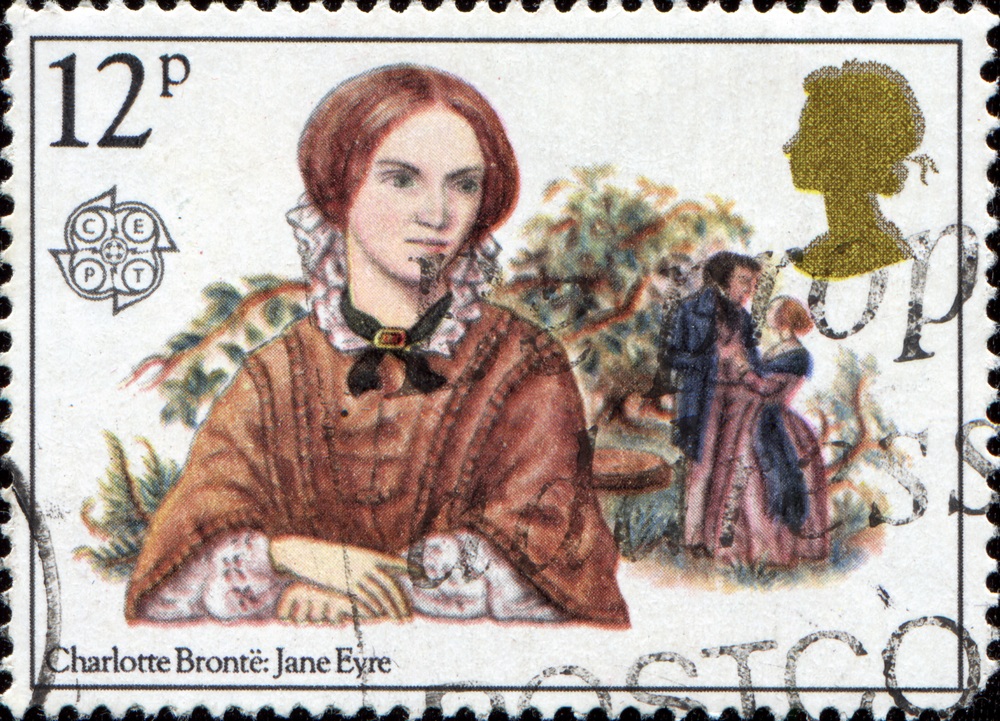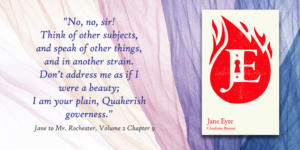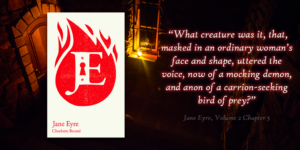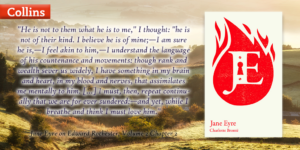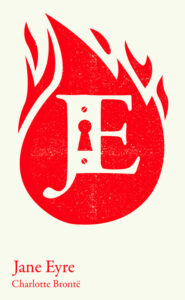Use these 5 discussion points and 5 extension tasks to help your students understand the context of this classic novel by Charlotte Brontë.
Jane Eyre is a transcendent novel. I’ve read it as an 11-year-old and through my teens then into adulthood, and it gets richer and more relevant with each sitting. It’s an incredible choice for the classroom as 170 years later it still has lines that floor me with their relevance to today’s society: ‘It is not violence that best overcomes hate – nor vengeance that most certainly heals injury’. Ask your students how this quote can be applied to today’s political climate or can they contextualise it against a situation they have come across recently? The novel is thematically rich and packed with literary devices so I’ve put together five discussion points you might like to use with your class; these would work well as speaking and listening assessments too, as well as five extension points that can be set as homework or revision tasks.
Please use this quote sheet as a starter activity or to cut up and hand out as a discussion starting point.
5 discussion points
- How does Jane’s childhood shape the woman she becomes?
As a young child Jane is treated with intolerable cruelty by every single person around her with the exception of her loyal friend Helen who dies of a fever and leaves Jane lonely once again. Her cousin taunts and abuses her, ‘where are you rat?’ and her aunt instructs the puritanical school master to ‘Deny your love to Jane Eyre’. She is called a ‘wretched imp’ and locked in the red room for hours on end and asked ‘should you like to fall in to this pit (hell) and be burnt forever?’ How would this treatment make you feel? How could it change your character? In what ways does Jane rise through the ashes of such a childhood? Does it make her more considerate to others or more likely to speak her own truth? Can you find examples of this in the novel?
- In your opinion, does Jane’s choice to run away after her discovery of Bertha in the attic and Rochester’s lies show her weakness or her strength?
Encourage students to consider her other options and whether they are realistic, after all Rochester does encourage her to stay and asks her what harm it would do. How does Jane respond to this? What does it show us about her character? Are morals always the most important thing? Does love outshine everything else? Would you be able to forgive Rochester? Can they use quotes as evidence in their discussion?
- To what extent is madness a key theme in Jane Eyre?
Bertha is kept imprisoned in the attic, bites her brother and then escapes to light fires. Jane herself was imprisoned in many ways both literal – the red room and the boarding school and metaphorically in her own loneliness, escalated by the fact that she has the family she so wishes for but is kept from them by the secrecy of her cruel aunt. Does Jane swap one prison for another in the fact that she moves straight from a boarding house to Thornfield Hall which we are told seldom has visitors ‘…November until February’ and nearly causes Miss Fairfax to turn towards madness in the winter months, ‘I really got quite melancholy by sitting night after night alone’. Is Jane mad on the moors? What about when she hears Rochester’s voice? Was she ‘mad’ to leave Rochester? What other examples of madness can you find in the novel?
- What examples of foreshadowing and pathetic fallacy can you find in the novel and what is their significance? What do they symbolise for the reader and the characters?
Instruct students to gather examples as a group and discuss their meaning and significance. They might like to look at the red room or the tree being struck by lightning after Rochester’s proposal. There is also the wedding dress being torn and ruined or the fire both earlier and later in the novel. What about Rochester’s blindness too? What does that literally and metaphorically symbolise?
- Jane Eyre is a romance novel, discuss
To what extent is this true? What examples can you find? Who loves who? Where are the examples of true soul binding love, ‘as if I had a string under my left ribs, tightly knotted to a similar string in you. And if you were to leave I’m afraid that cord of communion would snap. And I have a notion that I’d bleed inwardly’ Rochester compared to those of St John Rivers who states that they have ‘enough of love’ to make a go of a marriage. Why does Bronte show us different kind of love in the marriage? Does Blanche love Rochester? What kind of marriage would theirs have been? What was expected of marriage in the 1800s? What else is the novel about? Would you describe it as a romance novel? If not, how exactly would you describe it?
5 extension activities
- Plot out a timeline of how Jane develops in the novel. What are her pivotal moments? Add quotes as evidence and analyse the language used. This can also be used as a revision exercise.
- Research the Bronte sisters and draw on your findings to draw relevance to the novel. To what extent were they ahead of their time? How are Charlottes’ thoughts on life embedded into the character of Jane? What does she have to say about society at the time? Why did Charlotte using the pseudonym of Currer Bell?
- Further reading suggestions: Wide Sargasso Sea by Jean Rhys tells the imagined story of Bertha, a character who in the original novel is given no voice. Good Night Stories for Rebel Girls also has lots of modern examples of women and girls who overcome diversity. The Yellow Wallpaper by Charlotte Perkins Gilman is a short story about madness induced by patriarchal society and a keen mind being suppressed and has many links for themes in Jane Eyre. Rebecca by Daphne Du Maurier has similar strains and is a book to recommend to those who enjoyed Jane Eyre, as is the collection of short stories, ‘Reader I married him’ all inspired by Jane Eyre.
- Drama activities; Imagine you are Jane in 20 years time, how would you reflect on your life? Imagine you are Miss Fairfax, what do you think of Rochester and Jane’s engagement? Blanche, her mother and friends hear of the news of Jane and Rochester, what would they say? Recreate the scene in the church when Rochester’s secret is revealed, this time give Jane a voice. What would she say?
- Imaginative and creative responses: Would students like to respond to the novel in a poem or as a piece of art? If you could sum up the novel in one word or one image what would it be?
By Joanna Fliski
Joanna Fliski has taught English Literature and Language to 11-18 year olds at an urban comprehensive secondary school for 10 years, she had the highest value added score for her students and was nominated for an outstanding teacher award. As well as teaching Drama and Media GCSE she was head of PSHE, trained teachers and is a behavioural specialist. Joanna currently teaches in primary schools in Bristol. She is also a freelance author, writing resources and teacher guides for the Cambridge IGCSE, creating schemes of work and contributing to a number of educational blogs.
Collins Classroom Classics are KS3, GCSE and A-level set texts and plays that are perfectly pitched for students.
View the full range, including Charlotte Brontë’s Jane Eyre for GCSE students.
